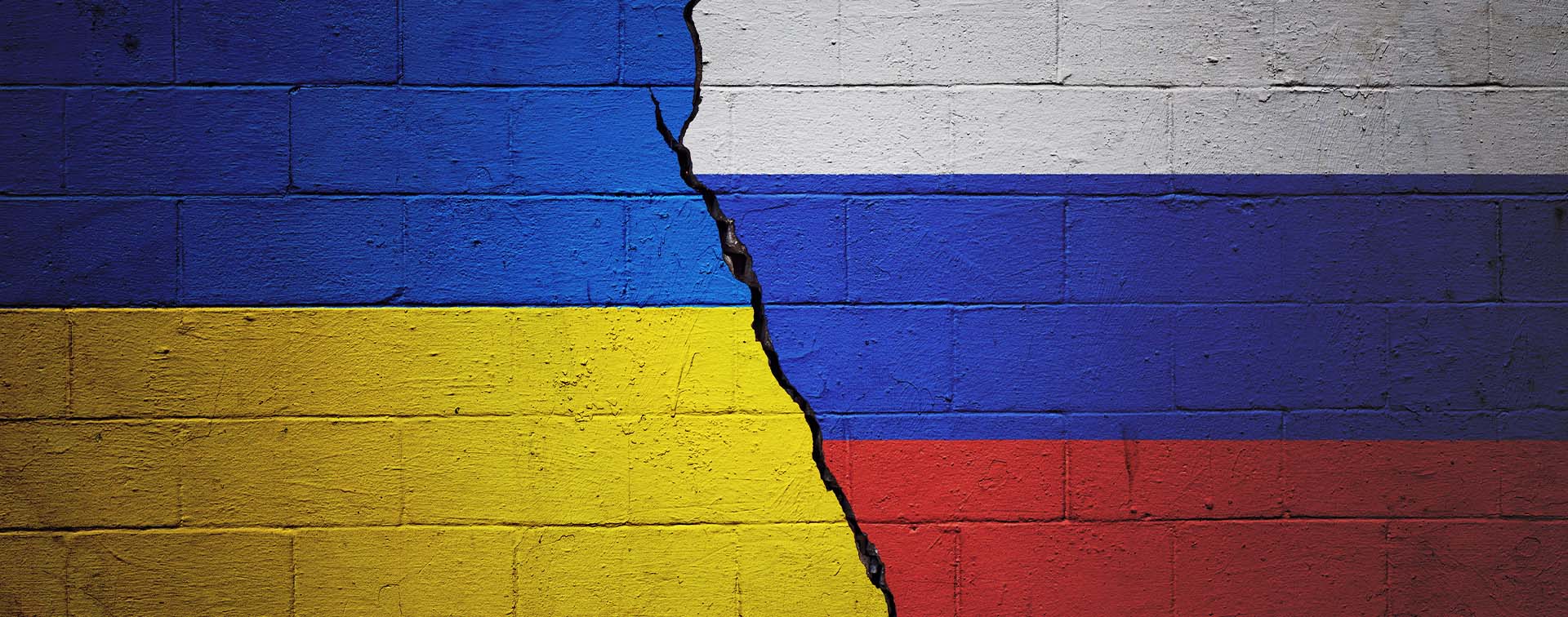
Misha Glenny is an award-winning journalist and a former BBC Central Europe Correspondent. Now the Rector of the Institute for Human Sciences in Vienna, he also regularly contributes to the BBC, the Financial Times, and The New York Times on geopolitics and emerging trends.
Voluntary migration was severely curtailed as a consequence of restrictions imposed during the pandemic. So it is only now that we are able to get a sense once more of how high-net-worth individuals (HNWIs) are reacting to a variety of geopolitical and economic trends when selecting their place of residence. The most glaring shift revealed by Henley & Partners’ data monitoring the movements of millionaires around the world has nothing to do with Covid, however, and everything to do with the Russo–Ukrainian war. This is the decision of both Russian and Ukrainian HNWIs to leave their home countries to seek safety elsewhere.
At first glance, the significant movement of Russians and Ukrainians obscures other striking aspects of the 2023 figures. There has, for example, been a dramatic reduction in the lure of the USA as a destination for HNWIs. Britain, too, continues to suffer the consequences of Brexit and exceptionally high taxes, making it an ever less popular destination. Meanwhile, the hemorrhaging of HNWIs from mainland China and Hong Kong continues at a brisk pace. In general, domestic policy shifts account for these developments as I argue below, although geopolitical considerations have an impact too.
In certain cities, the influx of HNWIs from Russia and Ukraine is highly visible. In Vienna, for example, the authorities initially exempted Ukrainian-registered vehicles from normal parking restrictions following the Russian invasion. This led to a popular backlash among Austrians and since 1 June, Ukrainians can no longer ignore the local by-laws. But for several months, it was hard to miss the striking incidence of expensive SUVs being parked across the city center. The amount of Russian and Ukrainian heard on the streets of the Austrian capital has also rocketed.

This significant movement is backed by the figures. As the Henley Private Wealth Migration Report 2023 reveals, the net outflow of Russian HNWIs in 2022 was 8,500, which is 55% higher than in 2019. Henley & Partners predicts this rate will slow in 2023, with a net departure of 3,000 Russians forecast, possibly because those determined to move already have done. For Ukrainians, the data is even more dramatic — a nine-fold increase in net outflow was forecast mid-2022, but the war has made it difficult to continue tracking millionaire movements.
Overall, these figures translate into a 33% reduction of HNWIs living in Russia year on year between 2021 and 2022. Although the total HNWI population decline in Ukraine can't be calculated due to lack of data, the country only boasted some 6,700 HNWIs at the end of 2021 compared to Russia, which was home to over 100,000. Nonetheless, it is safe to assume that due to the war, Ukraine will have registered a similar percentage fall by the end of 2022.
Immediately following the Russian invasion of Ukraine on 24 February 2022, the European Union announced it would allow visa-free access to any Ukrainian citizen fleeing the war (the privilege was not granted to Ukrainians already resident in a third country such as Canada). There are now over 8 million Ukrainians registered in the Europe according to the UN, but the overwhelming majority are women, as men between the ages of 18 and 65 require special permission to leave the country. We can safely assume that most Ukrainian millionaires are men, which means that a significant number must have made the decision to leave before the war and the decision to restrict male emigration.
The obvious beneficiary of the Russian emigration in particular is the UAE, which has long been a favorite destination of HNWIs from around the world. The reasons are obvious: zero taxation rates; highly developed infrastructure; low levels of street crime; a great deal of sun; affordable apartments aplenty; and increasingly cultural attractions such as the Louvre in Abu Dhabi and the Dubai International Book Festival that boasts some of the world’s top-selling authors. As a hub for the wealthy and business from all corners of the world, the opportunities to expand one’s professional activities are significant.
With a remarkable net inflow of 5,200 HNWIs having relocated to the UAE in 2022, it leapt from 7th most attractive in 2019 to the top spot in 2022, while Singapore and Israel also registered impressive increases over the same period. This year, however, Henley & Partners predicts that Australia will knock the UAE off the top of the charts with an estimated net influx of 5,200 millionaires heading down under. Meanwhile, the estimate sees UAE dropping to second place with a net inflow of 4,500 in 2023.
The rise of Australia has been quite dramatic. The country has produced thousands of HNWIs of its own in the past decade, much of which is ascribed to the growth of the mining industry. For outsiders, the attractions are obvious: great weather, dynamic cities, personal security, low inheritance taxes, and excellent universities. Increasingly, however, Australia’s proximity to the markets of China and Southeast Asia give it a significant advantage over its competitors.
By contrast Western countries are struggling to sell themselves. Several European Union (EU) member states have imposed further restrictions on their golden visa and golden passport systems, which allowed them to hand out residency in exchange for a certain level of investment. They have come under pressure from the European Commission, which has argued that these represent a security threat and a risk to the EU’s anti-money laundering operations. Ireland has scrapped its scheme altogether while Portugal is eliminating the scheme incrementally while Spain is considering its options.
But the primary reason for the millionaire retreat from the USA and the UK appears to be changes to the tax regimes. In 2017, the former president Donald Trump lowered taxes for the well-off with the wealthiest 5% of households receiving nearly half — 42.6% — of the Trump tax cuts, and the top 0.1% receiving an average tax cut of USD 193,380 in 2018. In 2023, however, President Joe Biden announced that his projected budget for 2024 would reverse many of these cuts, particularly those affecting HNWIs.
Brexit continues to prove a bad bet for Britain in its attempt not just to attract but simply to maintain its existing HNWIs. In 2022, the country, which continues to suffer from some of the highest taxation levels on record, saw a net outflow of HNWIs of 1,600. The majority were those who enjoyed non-dom status in the UK. In advance of March’s budget, there were rumors that Chancellor Jeremy Hunt might scrap that status. Britain’s golden visa program was ended, but Hunt eventually decided to retain the non-dom status although it is highly likely that an incoming Labour government would get rid of the provision.
But it is not just democracies that are losing out. In the past three years, President Xi Jinping’s government has started paying much closer attention to the activities of major banking and internet companies and their executives. This has coincided with the crackdown on the democracy movement in Hong Kong but also increased surveillance of the non-Chinese business community there. The number of HNWIs in China was down 5% in 2022 compared to 2021 — there are now have fewer than 1 million of them. Likewise, Hong Kong registered an 11% drop in HNWIs between 2021 and 2022.
The lessons for those who hope to attract HNWIs are clear: political stability is the key metric for those selecting where they want to live, together with low taxation regimes and personal freedom. Until the Russo–Ukrainian war comes to end, both countries will continue to export HNWIs and this will remain the single largest driver of relocation. But with elections due in many key Western countries in the next 18 months, other HNWIs may wait until their outcome, notably in the USA and the UK, before making their choice.
Henley & Partners assists international clients in obtaining residence and citizenship under the respective programs. Contact us to arrange an initial private consultation.

Have one of our qualified advisors contact you today.
We use cookies to give you the best possible experience. Click 'Accept all' to proceed as specified, or click 'Allow selection' to choose the types of cookies you will accept. For more information, please visit our Cookie Policy.